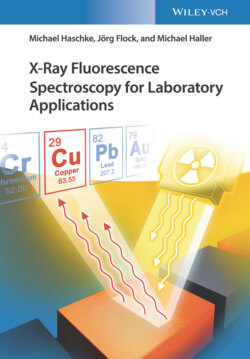Читать книгу X-Ray Fluorescence Spectroscopy for Laboratory Applications - Michael Haschke, Jörg Flock - Страница 26
2.4.2.4 Measurement and Evaluation of the Measurement Data
ОглавлениеIn accordance with these definitions, the measurements shall be carried out both on the unknown sample and, if necessary, on reference samples with the selected measuring conditions.
Thereafter, a processing of the raw data is required, i.e. the measured intensities must be corrected for overlap with other lines, for detector artifacts as well as for the spectral background. The resulting net intensities can then be converted into mass fractions or layer thicknesses using appropriate quantification models. By comparison with reference samples, the analytical result can be improved, or the measurement uncertainty can be reduced.
Finally, before using the test method it can be essential to validate the entire analytical process. According to ISO EN DIN 17025 (DIN-EN-ISO-17025 2005) the validation is defined as “the confirmation by examining and providing proof that the special requirements for a specific intended use are met.” For that purpose, the required statistical parameters can be determined with the help of suitable reference samples or by comparing the analyses results of different samples with those of other independent analytical methods. These include the validity range of the method, and parameters such as trueness, repeatability and comparability, specificity and selectivity, as well as in the case of the detection of low mass fractions, the detection and determination limits. Validation is necessary to demonstrate the quality of an analytical method and to determine the achievable uncertainty of the analytical results.
